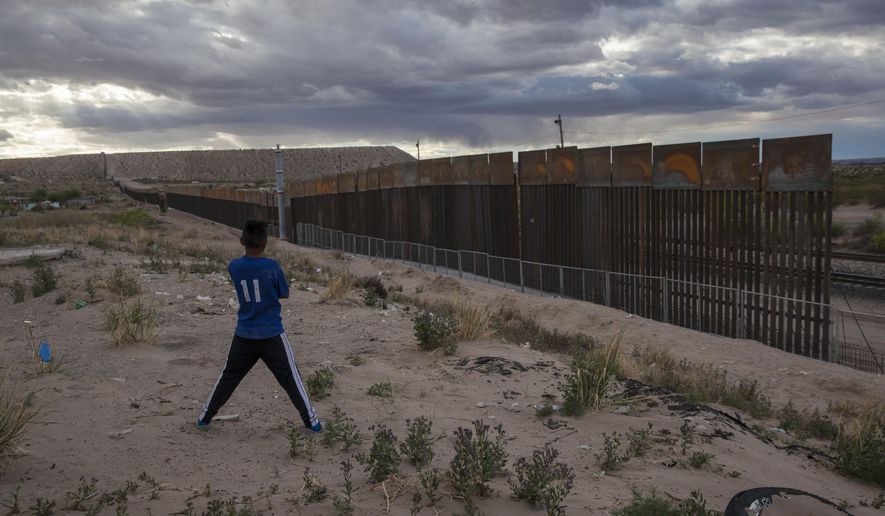Homeland Security said Tuesday that at least 130 miles of the U.S.-Mexico border have enough natural barriers that there’s no need to build a wall there — leaving most of the 1,954-mile divide as potential ground for a fence.
Customs and Border Protection (CBP), the agency charged with building President Trump’s wall, said it hopes to begin construction by the end of the summer on prototypes that would serve to test different designs.
CBP is aiming to have between four and eight final wall options, acting Deputy Commissioner Ronald Vitiello told reporters, delivering an update on progress on one of the president’s major campaign promises.
“We are already making great progress,” Mr. Vitiello said.
He said fencing has proved to be successful in controlling illegal immigration and reducing crime in areas where it’s been used in the past, including stemming massive waves of immigration in California in the 1990s and in Arizona in the last decade. Mr. Vitiello said technology and manpower were also part of the mix.
CBP is pushing ahead even though Congress has been reluctant to pony up. Democrats have vowed to resist any new mile of fencing, saying they’ll work to deny money in this year’s spending bills.
“Building a wall along the southwest border would divert critical resources away from more effective measures to ensure border safety, such as investing in port-of-entry security and procuring new technologies that monitor movements of people who try to cross the border,” Democratic senators said in a letter earlier this month.
So far, Congress has approved $20 million to build the wall prototypes, and 40 miles of replacement fencing in California and Texas.
Mr. Trump had initially vowed Mexico would foot the bill for the wall, but has since tamped down on that possibility. Last week he suggested placing solar panels on the wall to produce energy, which could then be sold to help pay for the cost.
Mr. Vitiello said that suggestion has not trickled down to the designers.
Mr. Trump had initially talked about a wall across the entire border but the administration has since backed off that — though they’ve been reluctant to say how much they do envision.
Mr. Vitiello, though, did say they’ve only ruled out about 130 miles of the border — about 7 percent — as definitely not worthy of a fence. He said places such as Texas’s Big Bend have natural barriers that are nearly impassable.
“I think it’s in the neighborhood of 130 miles where we’ve looked at, because of lakes, because of high mountain range, or because of these deep canyons that it just doesn’t seem practical to have a wall,” Mr. Vitiello said.
That still leaves plenty of ground for a potential fence.
Some 354 miles of the border have a full fence right now, and another 300 miles have vehicle barriers that can stop cars and trucks but easily allow passage of those on foot.
CBP has submitted requests for money in the 2018 budget to fence in 60 more miles in Texas, and replacing 14 miles of existing secondary fencing in San Diego.
Mr. Vitiello said the San Diego fence has been breached more than 800 times in just the last year, making it vulnerable to drug cartels.
• Stephen Dinan can be reached at sdinan@washingtontimes.com.




Please read our comment policy before commenting.